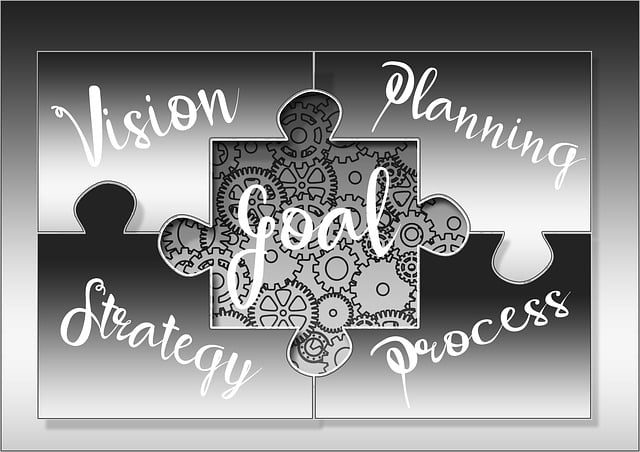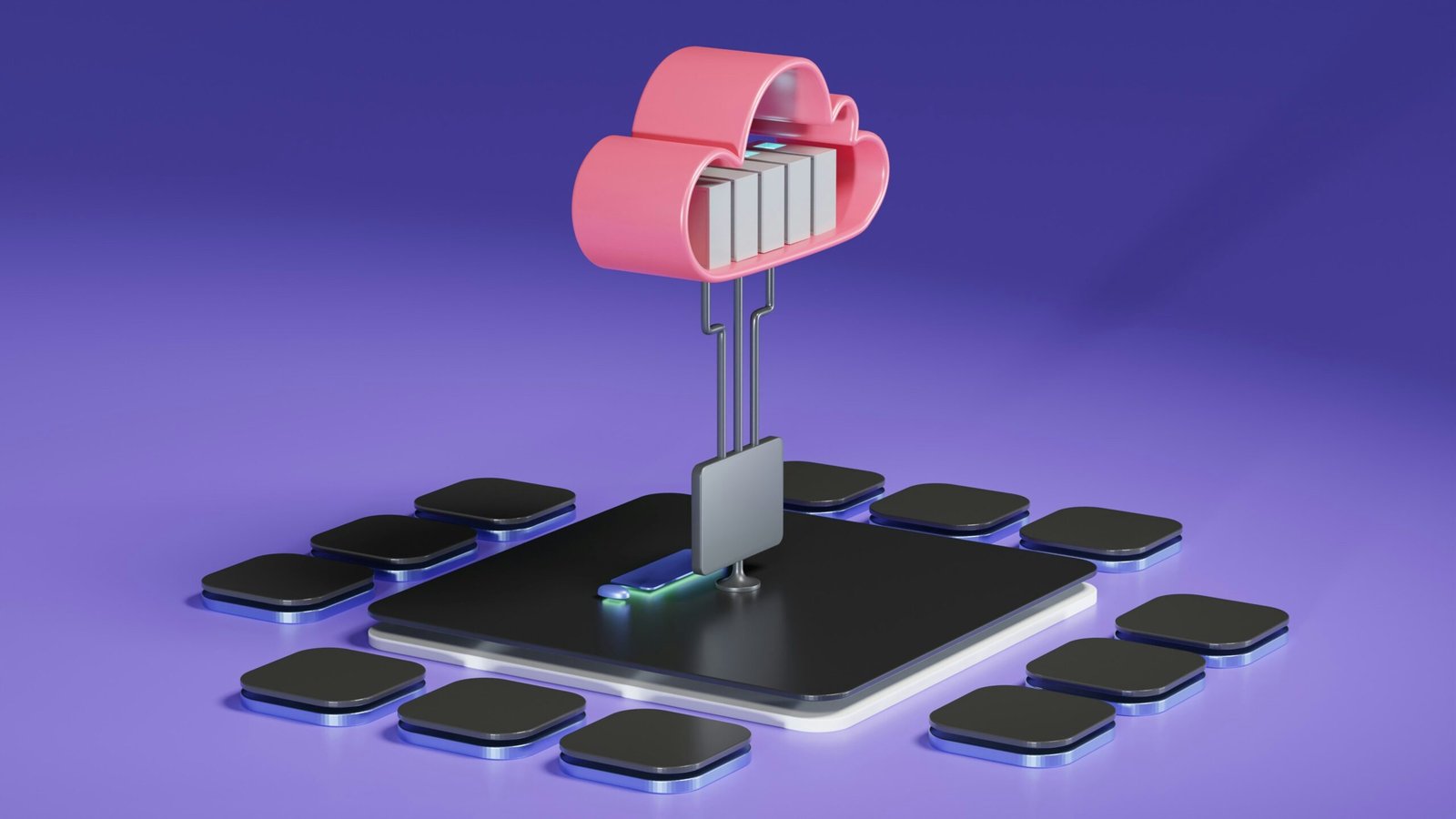People Process Technology: Untold Secrets Behind Business Success You Can’t Ignore
Introduction: What is People Process Technology?
Let’s start by busting a myth: People, process, and technology are not three separate elements you can throw into a business and expect magic to happen. A lot of people believe that if you just have the right technology or process in place, everything else will automatically fall into place. The truth? It’s the balance and integration of all three that make the real difference.
So, what exactly is people-process technology? It’s a framework that combines the human side of your business (people), the operational side (process), and the tools (technology) to create a smooth, efficient, and scalable business environment. When you align these three components, it can supercharge productivity, streamline workflows, and make your business more adaptable to change.
Why Does People Process Technology Matter?
In today’s fast-paced, constantly evolving business world, people-process technology isn’t just a buzzword – it’s a necessity. Think of it as the secret sauce for companies aiming to stay competitive and future-proof their operations. Businesses that embrace this framework are better equipped to handle challenges, adapt to technological advancements, and maintain a motivated workforce.
If you’re wondering why this matters, it’s simple: People drive the innovation, processes ensure efficiency, and technology makes everything faster, smarter, and more scalable. When these three elements are in sync, businesses achieve higher operational success and enjoy more sustainable growth. That’s why understanding and implementing the right people process technology framework can make all the difference.
The People, Process, and Technology Framework Explained
So, now that we’ve busted the myth, let’s dive into the core elements of people-process technology.
1. People: The Human Element
Let’s face it – no business runs without its people. They’re the ones making decisions, solving problems, and driving results. But when we talk about people in the context of people-process technology, we mean more than just your team members. We’re talking about human capital, which includes how employees interact with each other, how they are trained, and how motivated they are to do their best work.
Human capital is at the heart of the people-process-technology model. The right training, skills, and mindset are crucial for making processes work effectively and using technology to its fullest potential. When your employees understand their role in the people-process-technology framework, they can collaborate better, adapt to new tools, and contribute to the overall success of the business.
2. Process: The Operational Backbone
Now that we’ve got the people part down, let’s talk about the process. In simple terms, processes are the workflows, systems, and procedures that guide how things get done. Whether you’re managing customer orders, setting up a new project, or automating your marketing, every step of the process needs to be well-defined and efficient.
The beauty of integrating people-process technology is that once your processes are aligned with the right people, technology can come into play to automate repetitive tasks, improve accuracy, and reduce human error. Think of it like a well-oiled machine: when the gears (processes) are working smoothly, everything else falls into place.
3. Technology: The Tool for Efficiency
And finally, we have technology – the tool that speeds things up and makes everything more efficient. We’re talking about everything from the software you use to the automation tools that help streamline your business operations. The right technology will help your team execute processes faster, reduce mistakes, and improve the overall customer experience.
People who process technology rely heavily on technology to integrate and optimize processes. But technology alone won’t fix your problems; it has to be aligned with your processes and supported by your people. When done right, technology can elevate your business and help you achieve scalability.
By now, you should have a better understanding of the people-process-technology framework. It’s all about creating harmony between people, processes, and the tools that help them work together. When you find that sweet spot, your business becomes more efficient, adaptable, and primed for growth.
Why People Process Technology Matters in Modern Business
Let’s squash a common misconception right away: People, process, and technology are not just buzzwords thrown around by consultants to sound smart. When people hear “digital transformation” or “people process technology,” they often think it’s something reserved for big corporations with massive budgets. But the truth is that businesses of all sizes can leverage this framework to create smoother operations and better customer experiences.
So, why does people process technology matter in modern business? Let’s break it down.
1. The Perfect Formula for Success
When businesses integrate people, processes, and technology, they create a perfect formula for success. Why? Because these three elements complement each other and work together to drive business performance. Let’s look at each one:
- People: Employees are the lifeblood of your business. They make decisions, adapt to new tools, and work together to solve problems.
- Processes: Well-defined processes make sure work gets done efficiently and consistently.
- Technology: The right tech tools make everything faster, smarter, and more scalable.
Without a balance of these three, things can get messy. For example, if you focus only on technology without optimizing processes or training your people, you risk a situation where your tools don’t get used properly, or worse, employees resist them altogether. That’s why the people process technology model is all about alignment – making sure that your people know how to work with processes, and processes work seamlessly with technology.
2. Driving Business Growth and Adaptability
People processing technology is also a key factor in helping businesses stay competitive in a rapidly changing world. Here’s why:
- Adaptability: In today’s fast-paced environment, businesses need to pivot quickly. Whether it’s new market trends, consumer preferences, or unexpected challenges, companies that have a well-aligned people-process-technology framework can react faster and more effectively.
- Business Growth: When your processes are optimized and your people are empowered with the right tools, business growth follows. Employees work more efficiently, customers are happier, and overall productivity improves.
Companies that embrace people-process technology are more adaptable and capable of scaling without missing a beat. This is why so many organizations are moving towards a more integrated approach to managing their people, processes, and technology.
Top Benefits of People-Process Technology Integration
Let’s start by addressing another myth: People process technology integration isn’t just for big enterprises. Many small and medium-sized businesses think they don’t have the resources to implement this framework, but that couldn’t be further from the truth. Whether you’re running a small startup or a well-established enterprise, the benefits of integrating people-process technology are vast and accessible.
1. Boosting Efficiency Across the Board
One of the first things you’ll notice when you align people with process technology is an increase in efficiency. Here’s how it works:
- Streamlined Workflows: When processes are automated and optimized, employees spend less time on repetitive tasks and more time focusing on strategic goals.
- Reduced Human Error: With technology in the mix, you can reduce mistakes and inefficiencies caused by manual work. For example, integrating an automated CRM system can drastically cut down on data entry errors.
Ultimately, businesses become more efficient by aligning their people, processes, and technology. This is key for businesses looking to stay competitive and ensure that resources are being used effectively.
2. Enhancing Collaboration and Communication
When employees, processes, and technology work in harmony, communication within a company improves significantly. Here’s why:
- Clearer Roles and Responsibilities: With well-defined processes, everyone knows what’s expected of them. This clarity fosters better collaboration and teamwork.
- Better Tools for Collaboration: Technology enables smoother communication, whether it’s through project management tools or team collaboration platforms. The right tools can make it easier for teams to work together, regardless of their physical location.
The result is a more connected workforce, where people can collaborate without barriers. This is especially important in remote work environments, where people process technology and play a pivotal role in keeping teams aligned.
3. Greater Scalability and Flexibility
Another huge benefit of people-process technology integration is scalability. When your business grows, it’s easy to scale operations without sacrificing quality. Here’s how:
- Automated Processes: As businesses grow, managing all the tasks manually can become overwhelming. By automating key processes, companies can scale without increasing headcount or overloading their teams.
- Adaptable Technology: The right technology doesn’t just make your business faster – it can also be customized to meet evolving needs. This flexibility means your tools can grow with your company, whether that’s adding new features or upgrading to more powerful solutions as you expand.
Scalability is essential for businesses that want to thrive long-term. Integrating people and process technology gives businesses the foundation they need to scale efficiently and with minimal growing pains.
4. Improving Customer Experience
Last but certainly not least, people process technology, which plays a huge role in improving the customer experience. Here’s how:
- Faster Response Times: With automated workflows and the right tech tools, companies can respond to customer inquiries or service requests faster.
- More Personalized Service: Technology enables businesses to collect data and provide more tailored services, ensuring that customers feel valued and understood.
When people, processes, and technology are aligned, businesses can deliver faster, more personalized experiences that keep customers happy and coming back.
Common Mistakes to Avoid When Implementing People Process Technology
Before we jump into how to implement people process technology, let’s talk about what not to do. A lot of companies get excited about the benefits but fall into some common traps that make the implementation fail. And let me tell you – implementing the wrong people, process, or technology mix can set your business back instead of propelling it forward.
1. Forgetting to Align People with Processes
A common mistake businesses make when trying to implement people-process technology is thinking that it’s all about the tools. They jump straight into adopting new technology but fail to train their employees or align their team with the new processes. What happens then? You end up with people who don’t know how to use the tools effectively, or worse, they resist using them because they don’t see the benefit.
2. Overcomplicating the Process
Another mistake is overcomplicating the process itself. Remember, simplicity is key. When businesses create complex workflows or adopt technology that’s too advanced for their needs, they risk overwhelming their team. This complexity makes it harder for employees to adopt and follow processes, and it can slow down productivity.
Instead, focus on streamlining your processes to match the needs of your team and technology. People process technology should work for you, not against you.
3. Not Getting Feedback from Employees
A mistake often overlooked is not gathering feedback from the people who are directly impacted by the new processes and technology. Your employees are the ones who will be using the system every day, so it’s essential to get their input. Failing to do so can lead to frustration and inefficiency, as employees might feel that the changes don’t meet their needs.
Make sure you involve employees in the decision-making process and ask for feedback during the trial phase. This will help identify potential issues early on and lead to a smoother transition.
4. Ignoring Change Management
Lastly, not focusing on change management is a huge mistake. Implementing new people process technology isn’t just about installing new tools – it’s about changing how your team works and interacts with each other. Change management involves preparing your team for the shift, providing adequate training, and offering ongoing support.
Without a solid change management plan, you might face resistance, decreased morale, and even higher turnover rates. So, ensure that your employees feel supported throughout the transition.
Best Practices for Implementing People Process Technology
Now that we know the mistakes to avoid, let’s focus on how to implement people process technology the right way. With a little planning and strategy, you can set your business up for success.
1. Start with Clear Goals
First things first: define your goals. What do you want to achieve with people and process technology? Do you want to improve efficiency, enhance collaboration, or scale your business? Establish clear objectives that align with your business vision so you can choose the right tools and processes that fit your needs.
Remember, people process technology is not a one-size-fits-all solution. The tools and strategies that work for one company might not work for another. So, take the time to evaluate your specific goals and tailor your implementation plan accordingly.
2. Involve Key Stakeholders Early
Getting buy-in from key stakeholders is essential for successful implementation. Your managers, department heads, and employees should all have a voice in the process. This not only helps create a sense of ownership but also ensures that the new system meets everyone’s needs.
Involve key stakeholders early on by holding meetings, asking for input, and creating a sense of collaboration. This approach fosters a smoother transition and can help identify potential problems before they become roadblocks.
3. Invest in the Right Technology
You might be tempted to go with the latest, most popular technology on the market, but that’s not always the best choice. Technology needs to align with your business goals and the needs of your team. Take the time to assess your options, and choose tools that will help your people work smarter, not harder.
Make sure that your technology is intuitive, user-friendly, and scalable so it can grow with your business. And always choose a platform that integrates well with your existing systems, so you don’t end up with compatibility issues down the line.
4. Provide Ongoing Training and Support
Just because you’ve implemented the technology doesn’t mean your job is done. Ongoing training and support are critical to making sure your team can use the new system effectively. Offer regular training sessions, webinars, and resources to help employees stay up-to-date with the tools and processes.
Additionally, create a support system where employees can easily ask questions or report issues. A robust support system ensures that your team feels confident and comfortable using the new technology.
5. Monitor Progress and Adjust as Needed
Lastly, keep track of your progress and be open to adjustments. It’s important to monitor how well your people, processes, and technology are working together. Track key performance indicators (KPIs) and gather feedback from employees to identify areas that need improvement.
People processing technology should be flexible, and you should be willing to make changes as necessary. Continuously assess the effectiveness of your system and make adjustments based on data and feedback.
By following these best practices, you can ensure that your people process technology integration is successful. When done right, this approach can dramatically improve your business operations, help your team work more efficiently, and drive long-term success.
Real-World Examples of Successful People-Process Technology Integration
You might think that people processing technology is just another trendy business term, but real-world examples prove otherwise. Businesses are seeing measurable improvements by integrating people, processes, and technology – and you can, too. Let’s take a look at a few companies that nailed it.
Example 1: A Retailer Streamlining Customer Experience
Imagine a large retail chain that struggled with customer service and inventory management. Customers often faced long wait times, and employees were drowning in paperwork. By integrating a customer relationship management (CRM) system and automating key processes, they streamlined operations and drastically improved service delivery.
Here’s how they did it:
- People: Employees received proper training on how to use the new system, making them more efficient and reducing errors.
- Process: Customer inquiries were automatically routed to the appropriate department, and inventory updates were automated.
- Technology: The CRM system handled all customer interactions, from online orders to in-store purchases, creating a seamless experience for both employees and customers.
The result? Customer satisfaction skyrocketed, and inventory management became much easier. Sales increased, and employees had more time to engage with customers instead of spending hours on administrative tasks.
Example 2: A Tech Company Boosting Team Collaboration
Another example comes from a tech startup that was struggling with remote team collaboration. With a growing team, communication was often disjointed, and project deadlines were missed. They decided to implement a project management tool and focus on improving communication.
Here’s what they did:
- People: The team was trained to use the new software, improving transparency and communication.
- Process: The project management tool was integrated into their daily workflows, automatically tracking progress and updating timelines.
- Technology: The company adopted cloud-based technology to enable easy sharing of documents, timelines, and feedback.
After implementing the new system, the company noticed an increase in project completion rates, reduced delays, and better cross-department collaboration. It wasn’t just the tools – it was the alignment of people and processes that led to a successful transformation.
Example 3: A Manufacturing Firm Enhancing Efficiency
One manufacturing company faced delays in production and supply chain management. Their employees were constantly juggling multiple systems, and there were inefficiencies in how orders were processed. They implemented enterprise resource planning (ERP) software to address these challenges.
Here’s how the people-process-technology model came into play:
- People: Workers were trained on how to use the ERP system to track materials and orders.
- Process: They redesigned their workflows to ensure that the right information was always available to the right people at the right time.
- Technology: The ERP system automated inventory tracking, order processing, and reporting, giving employees a single platform for everything.
The results were impressive: production time decreased, order fulfillment was faster, and overall costs were reduced. The company also noticed fewer errors and better communication between departments.
How to Measure the Success of People Process Technology Implementation
After all the hard work you’ve put into implementing people process technology, how do you know if it’s working? It’s essential to track the ROI and measure the success of your efforts so you can continuously improve. Let’s go over how to do just that.
1. Setting Clear KPIs
To measure the effectiveness of people process technology integration, you need to set clear KPIs (key performance indicators). Without these metrics, it’s impossible to know whether your efforts are paying off. Here are some KPIs to consider:
- Efficiency Gains: Track how much time is saved after automation is implemented. For instance, if employees are now spending less time on manual tasks, that’s a win.
- Employee Productivity: Measure if employees are completing more tasks in less time or if they’re producing higher-quality work after using the new technology.
- Customer Satisfaction: Since one of the key goals is often to improve customer experience, tracking metrics like response time and customer feedback will be critical.
Setting these KPIs allows you to pinpoint areas of improvement and track progress over time. Make sure your team knows these goals upfront so that everyone is aligned.
2. Regularly Gathering Feedback from Employees
Your team is your best source of insight when it comes to measuring success. Gather feedback regularly to see how they feel about the new tools and processes. This can be done through surveys, one-on-one meetings, or team discussions.
Questions to ask:
- Are employees finding the new technology easy to use?
- Has technology made their work easier or more complicated?
- Have processes improved, or are there still bottlenecks?
Getting feedback from your team helps you adjust quickly if something isn’t working as planned. It also gives employees a voice in the process, which improves buy-in and adoption.
3. Tracking Financial Impact
Ultimately, you want to see if your people process technology integration is having a positive financial impact. Look for improvements in areas such as:
- Cost Savings: Have you reduced operational costs through automation and streamlined processes? Are you spending less on errors or redundant tasks?
- Revenue Growth: Has customer satisfaction increased to the point where you’re seeing higher sales or retention?
- Return on Investment (ROI): Compare the costs of implementing technology and training employees with the benefits gained, like increased productivity or reduced operational costs.
Tracking the financial impact gives you a tangible measure of success and helps justify future investments in technology.
4. Monitoring Long-Term Results
In the early stages of people process technology integration, you’ll likely see quick wins. However, it’s important to monitor long-term results as well. Over time, you should see more substantial improvements, like:
- Sustained Efficiency Gains: Are employees still operating more efficiently after the initial excitement has worn off?
- Ongoing Process Optimization: Has the system continued to evolve and adapt to changing business needs?
- Continued Customer Satisfaction: Are customers still happy with the new service levels, and are you maintaining a competitive edge?
Don’t just celebrate early success – keep monitoring progress and adjusting your approach as needed. Continuous improvement is key to long-term success.
The Future of People Process Technology
If you think that people processing technology is a trend that’s going to fade out soon, think again. It’s just getting started, and its role in businesses is only going to grow more critical. As technology continues to evolve, businesses will keep finding ways to enhance their operations through the synergy of people, processes, and technology.
1. Increased Use of Artificial Intelligence and Automation
One of the most exciting developments in the people-process-technology landscape is the increased use of artificial intelligence (AI) and automation. Over the next few years, businesses will continue to integrate AI and machine learning into their processes to improve efficiency and decision-making.
AI will help businesses analyze vast amounts of data to identify patterns and make more informed decisions. For instance, AI-driven chatbots can handle routine customer inquiries, allowing customer service teams to focus on more complex tasks. This automation saves businesses time and money, all while improving the customer experience.
By combining AI with automated workflows, businesses can reduce the risk of human error and boost productivity. For example, a company could automate inventory tracking, so employees spend less time on manual updates and more time on higher-value tasks like customer engagement or strategic planning.
2. Greater Integration of Cloud-Based Systems
Another big trend is the cloud revolution. The integration of cloud-based systems is already making waves, and it’s expected to continue growing. The cloud allows companies to centralize all their data, tools, and processes in one place, making it easy for employees to access the information they need from anywhere in the world.
With cloud-based systems, employees can collaborate seamlessly across locations, and businesses can quickly scale their operations without the burden of on-premise infrastructure. As more companies adopt cloud solutions, they’ll need to ensure their people, processes, and technology are perfectly aligned to maximize efficiency.
3. More Focus on Employee Well-Being and Experience
As businesses invest more in people process technology, there will also be an increasing focus on the employee experience. Companies will use technology to support employees’ mental and physical well-being, offering flexible work options, personal development opportunities, and digital tools that make their work easier and more rewarding.
For example, HR departments are already using AI-powered platforms to offer personalized career development programs for employees. In the future, technology will enable businesses to foster a more supportive work environment, helping employees thrive both personally and professionally. This will not only improve employee satisfaction but also retention rates.
4. The Role of Data Analytics
Data analytics is another area where people process technology that will evolve in the future. By collecting and analyzing data from various sources—whether it’s customer feedback, employee performance, or operational metrics—businesses will gain deeper insights into how to improve their processes.
Advanced data analytics will allow companies to predict trends, detect inefficiencies, and make adjustments before problems arise. For instance, a company might use data to predict demand spikes and adjust inventory levels accordingly, minimizing waste and maximizing profits.
Key Takeaways
You might be thinking, “I get the idea, but is people-process technology the key to success for my business?” Well, let’s break it down with some key takeaways to ensure you’re ready to jump in and leverage this powerful combination for your own business growth.
1. Aligning People, Processes, and Technology is Crucial
At the heart of people processing technology is the idea of alignment. You can’t just throw technology into the mix and expect everything to work out. You need to ensure that your people are trained and prepared to use the technology effectively, and you also have to adjust your processes to integrate the new systems smoothly.
It’s this alignment between people, processes, and technology that ultimately leads to greater efficiency, improved employee performance, and better customer outcomes. The goal is to streamline workflows, reduce errors, and create a more collaborative and responsive environment for both employees and customers.
2. Technology Alone Isn’t Enough
It’s easy to think that implementing the latest technology will automatically solve your problems, but it’s not that simple. Technology is just one part of the equation. Without the right people to manage it and the proper processes in place, even the best tools can fall short.
For example, a cloud-based system is great, but without proper training for employees and a solid strategy for how data will be processed and shared, the system can cause more problems than it solves.
3. Continuous Improvement is Key
The world of people processing technology is constantly evolving. What works today might not be as effective tomorrow, so it’s essential to maintain a mindset of continuous improvement. Always be on the lookout for ways to refine your processes, adopt new technologies, and better support your employees.
This isn’t a one-and-done deal—it’s an ongoing process that requires constant evaluation and adaptation. By keeping track of KPIs, gathering feedback from employees, and adjusting strategies accordingly, you’ll ensure that your people process technology integration continues to drive value for your business.
4. It’s All About the ROI
Finally, when implementing people-process technology, always keep an eye on the return on investment (ROI). While upfront costs might seem high, the benefits—such as increased productivity, better customer experiences, and higher profitability—make it well worth the investment.
The ROI comes from the increased efficiency, reduced costs, and enhanced decision-making that people process technology enables. So, don’t just look at the initial expenses; focus on the long-term impact it’ll have on your business.
These takeaways help reinforce the importance of integrating people process, and technology in your business strategy. The future is bright, with more companies using this approach to drive their success. By aligning your people, processes, and technology, you can stay ahead of the curve and unlock significant growth for your business.
Final Thoughts: Why People Process Technology is the Future of Business Success
In today’s rapidly changing business environment, people-process technology is no longer just a buzzword — it’s a powerful strategy that can help companies thrive. From boosting efficiency and enhancing decision-making to improving the employee experience, the combination of people, processes, and technology is a game-changer for businesses of all sizes.
As we’ve discussed, integrating AI, automation, and cloud systems is just the beginning. The future will bring even more exciting developments, such as advanced data analytics and a stronger focus on employee well-being. But no matter how much technology advances, the key to success remains in aligning your people and processes with the right tools.
Remember, technology alone won’t fix everything. It’s about creating a seamless integration where your teams are supported, your processes are streamlined, and your tech enhances both. This balance is the formula for driving greater efficiency, increasing ROI, and ultimately reaching your business goals.
So, if you haven’t yet embraced people-process technology, now is the time to start. The benefits are clear, and the future looks brighter than ever. Make sure you’re not left behind — start integrating people process technology today and watch your business grow smarter and stronger.
Ready to take the next step? Let’s dive into the future of work, where technology meets people and processes to create something truly remarkable.







